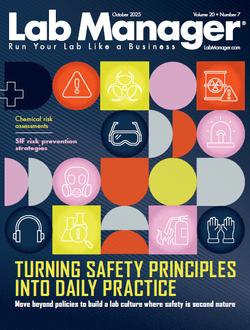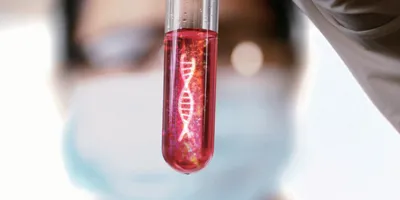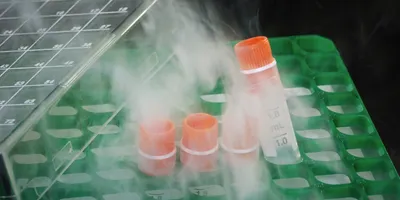Researchers at the U.S. Department of Energy’s (DOE) Argonne National Laboratory are feeling bullish about new biochips that can detect bovine mastitis infection in dairy cows.
Bovine mastitis is an udder inflammation that can put a cow out of commission for months. It costs the dairy industry $10 billion worldwide every year and $2 billion in the U.S. alone, said Argonne researcher Aeraj ul Haque. It can be caused by several different bacteria, including Staphylococcus aureus and E. coli.
SiteDiagnostics, a start-up biotechnology company based on research by ul Haque and Dan Schabacker, also of Argonne, won fourth place in the 2012 Edward L. Kaplan, '71, New Venture Challenge. The challenge is a business creation competition that funds the best entrepreneurial ideas by students at the University of Chicago’s Booth School of Business.
Currently, farmers have tests to determine whether a cow has mastitis, but not which bacterium is causing it. That’s where the SiteDiagnostics chip comes in.
Based on biochip technology originally developed for national security applications, the chip contains tiny wells that each detect different pathogens. Each well holds an antibody that recognizes a specific piece of a bacterium. The farmer or tester applies a sample of milk from an infected cow to the biochip; if one of the antibodies latches on to a pathogen, that well turns blue.
 |
| A biochip containing a sample of raw milk infected with strains of bacteria that can lead to bovine mastitis. Argonne National Laboratory |
“Knowing the cause is really helpful to the farmer, because different causes have different treatments,” ul Haque said. Some contagious bacteria require the cow to be quarantined; if the farmer knows it’s a different bug, he or she can avoid unnecessary quarantines.
“We calculate that a farmer with a 5,000-cow herd could invest $100,000 in testing and save $1 million per year,” ul Haque said.
“The same six bugs account for close to 90 percent of all mastitis cases,” Schabacker explained, which makes a chip practical since antibodies for S. aureus and other common bacteria are already commercially available.
The start-up will receive $10,000, office space at the University of Chicago for the summer of 2012 and networking opportunities, part of the Polsky Center Summer Accelerator Program. Ul Haque and Schabacker plan to find farms for initial testing of the technology. They also want to further reduce the cost of the chip from about $8 a chip to $5.
“We could also adapt this to detect quite a few other diseases in other veterinary applications,” Schabacker said. “Bovine tuberculosis, canine heartworm disease, even mad cow. Anything with a proteomic biomarker, we can detect.”
“The New Venture Challenge, along with Argonne’s Technology Development and Commercialization division, is a really good vehicle for scientists who have ideas but no marketing experience or opportunities,” ul Haque said. “As a postdoctoral researcher, I now have a platform to get my career started, and it’s also a good way to get technology to market more quickly.”
Researchers at the U.S. Department of Energy’s (DOE) Argonne National Laboratory are feeling bullish about new biochips that can detect bovine mastitis infection in dairy cows.
Bovine mastitis is an udder inflammation that can put a cow out of commission for months. It costs the dairy industry $10 billion worldwide every year and $2 billion in the U.S. alone, said Argonne researcher Aeraj ul Haque. It can be caused by several different bacteria, including Staphylococcus aureus and E. coli.
To continue reading this article, sign up for FREE to

Membership is FREE and provides you with instant access to eNewsletters, digital publications, article archives, and more.










